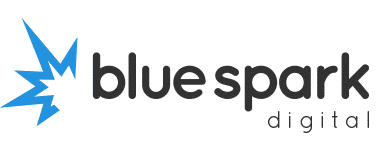How to Keep Your Website Safe, Fast and Google-Friendly (Without Being a Techie)
Running a small business is hard enough without having to worry about whether your website’s up to scratch. But here’s the truth:
If your website isn’t secure, speedy and Google-friendly – it could be quietly costing you business.
You don’t need to be a web expert to keep things running smoothly. You just need to know the basics – and what to look out for.
So, here’s a simple, jargon-free guide to keeping your WordPress site in good shape… even if you’re more “tea and email” than “tech and code”.
Why Speed, Security and SEO All Matter
Let’s quickly break down why these three things are worth your attention:
Speed
Slow sites drive people away. Google’s own data shows that if your site takes more than 3 seconds to load, over half your visitors will leave. It also affects your ranking.
Security
Hackers target small business websites all the time – not because you’re famous, but because you’re easy to target. Poorly maintained sites are open doors.
SEO (Search Engine Optimisation)
Google wants fast, well-structured, regularly updated websites. If you ignore the basics, you’re making it harder for people to find you online.
Now let’s look at what you can do – easily – to keep your site ticking over nicely.
-
Keep WordPress Updated
This is the single most important thing you can do. WordPress itself, your theme, and your plugins all need updates from time to time.
Updates fix bugs, patch security holes, and improve performance.
How to do it:
- Log into your WordPress dashboard
- Go to “Updates”
- Install available updates for WordPress core, plugins and themes
Tip:
Always back up your site before you update – just in case something breaks.
-
Use a Security Plugin
You don’t need to know how to code to protect your site. There are excellent plugins that do the heavy lifting for you.
Popular choices include:
- Wordfence
- iThemes Security
- Sucuri
They help block malicious login attempts, scan for malware, and alert you to problems.
Bonus tip:
Change your login URL from the default /wp-admin to something custom. It’s a simple tweak that can reduce brute-force attacks.
-
Optimise for Speed
Speed matters. Here’s how to improve it without diving into developer-level tweaks:
- Use an image compression plugin like Smush or ShortPixel
- Install a caching plugin like WP Rocket or W3 Total Cache
- Keep plugins lean – deactivate and delete anything you don’t use
- Avoid bloated page builders if possible
- Use good hosting – slow hosting ruins everything (and is usually the root cause)
- Get a Backup System in Place
Backups are your safety net. If your site gets hacked or breaks, you want to be able to roll it back fast.
Options include:
- UpdraftPlus (free and easy)
- BlogVault
- Jetpack Backups
Tip:
Store backups somewhere off-site – like Dropbox or Google Drive – not just on your hosting server.
-
Check Your SEO Basics
You don’t need to become an SEO expert. But make sure each page on your site has:
- A proper page title with your keywords (e.g. “Web Design in Aldershot”)
- A clear H1 heading
- A short, descriptive meta description
- Alt tags for images (descriptions of what the image shows)
- Clean, readable URLs (e.g. /services not /page?id=123)
Tools like Yoast SEO make this easy by guiding you through each page’s optimisation step-by-step.
-
Make Sure It’s Mobile Friendly
More than half of website traffic now comes from phones. If your site isn’t mobile-friendly, you’re alienating a huge chunk of your audience – and getting penalised by Google.
How to check:
- Use Google’s Mobile-Friendly Test
- Open your site on your own phone – is it easy to read, scroll and tap around?
If not, it might be time for a redesign.
-
Use HTTPS (SSL Certificate)
If your website still shows “Not secure” in the address bar, you need to fix that. Google uses HTTPS as a ranking factor, and users are more likely to trust your site if it’s secure.
Fix:
Your hosting provider should offer an SSL certificate. If they don’t, it might be time to move.
-
Get Some Help If You’re Not Sure
Even with the best intentions, things can go wrong. Maybe a plugin update crashes the site. Maybe your backups stop working. Maybe you just don’t have time to keep it all in check.
That’s where a website care plan comes in. I offer monthly support to handle:
- Backups
- Security
- Updates
- Speed checks
- Emergency fixes
So you don’t have to think about any of it.
What You Can Do Next
If you’ve had a “set and forget” mindset about your site, now’s the time to change that. A few small tweaks can make a big difference to your site’s speed, visibility and security.
And if you’d rather hand it off to someone else – I’ve got you covered.
Whether you want a quick check-up or full monthly support, I’ll help you stay safe, fast and Google-friendly… without needing a degree in web development.

